Introduction
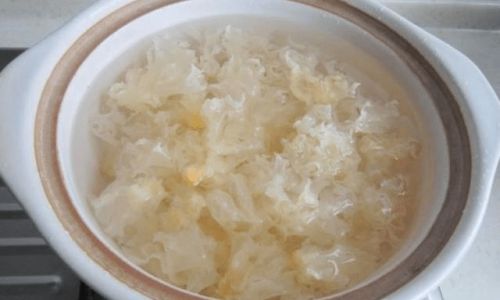
Tremella fuciformis, commonly known as white jelly mushroom or snow ear mushroom, is a popular edible fungus renowned for its nutritional benefits and culinary versatility. Native to China, this delicate, translucent mushroom has gained global recognition due to its rich content of dietary fiber, polysaccharides, vitamins, and minerals. One of the key steps in preparing Tremella fuciformis for consumption is soaking it in water to soften it and enhance its texture. However, the choice of water can significantly impact the final quality and taste of the prepared dish. This comprehensive guide explores the optimal water for soaking Tremella fuciformis, considering various factors such as water quality, temperature, and treatment methods.
Understanding Tremella Fuciformis
Before diving into the specifics of soaking Tremella fuciformis, it’s crucial to understand its unique properties. This mushroom is characterized by its gelatinous texture and high water-holding capacity. When soaked, it absorbs water and swells to several times its original size, making it an excellent ingredient for soups, desserts, and various culinary preparations.
Tremella fuciformis is also valued for its health benefits. Polysaccharides extracted from this mushroom have been studied for their potential roles in immune modulation, antioxidant activity, and anti-inflammatory effects. These properties make Tremella fuciformis a staple in traditional Chinese medicine and modern wellness diets.
Water Quality Considerations
When selecting water for soaking Tremella fuciformis, several quality factors come into play:
-
Purity and Source: The purity of the water is paramount. Tap water, while convenient, may contain impurities such as chlorine, fluoride, heavy metals, and other contaminants that can affect the taste and nutritional profile of the mushroom. Bottled water, on the other hand, can vary widely in quality depending on its source and processing.
-
Mineral Content: The mineral content of water can also influence the soaking process. Hard water, rich in calcium and magnesium, may leave deposits on the mushroom’s surface, affecting its appearance and texture. Soft water, with lower mineral content, is generally preferred for soaking Tremella fuciformis.
-
pH Level: The pH level of water can impact the extraction of nutrients and flavors from Tremella fuciformis. Water with a neutral or slightly alkaline pH is ideal, as it helps maintain the mushroom’s natural structure and enhances its ability to retain nutrients.
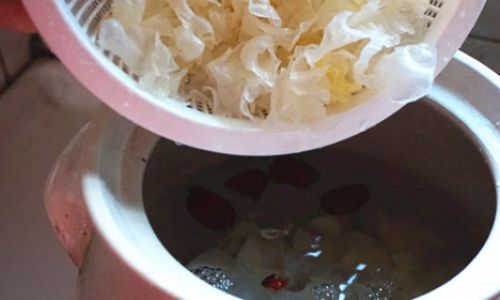
Temperature Considerations
The temperature of the soaking water is another critical factor. Different temperatures can affect the soaking time, texture, and nutritional retention of Tremella fuciformis:
-
Cold Water Soaking: Soaking Tremella fuciformis in cold water is a gentle method that preserves its delicate texture and nutrients. It requires longer soaking times, typically overnight or for several hours, but results in a more tender and flavorful mushroom. Cold water soaking is ideal for dishes that require a slow cooking process or when time is not a constraint.
-
Warm Water Soaking: Warm water shortens the soaking time, making it suitable for quick preparations. However, it’s crucial to avoid using boiling water, as it can denature the mushroom’s proteins and destroy its gelatinous structure. Warm water soaking should be limited to temperatures below 80°C (176°F) and for no longer than 30-45 minutes to prevent overcooking.
-
Hot Water Blanching: While not traditional soaking, hot water blanching can be used for immediate use in cooking. This method involves dipping Tremella fuciformis in boiling water for a brief period (5-10 seconds), followed by immediate immersion in ice water to stop the cooking process. Blanching helps to soften the mushroom and remove any surface impurities but should be used sparingly to avoid nutrient loss.
Water Treatment Methods
To ensure the best soaking results, consider treating water before using it:
-
Filtration: Using a water filter can remove impurities such as chlorine, lead, and other contaminants. A high-quality carbon-based filter or reverse osmosis system is recommended for optimal purity.
-
Distillation: Distilled water is pure and free from minerals and contaminants. While it may not provide the necessary minerals for soaking Tremella fuciformis, it ensures a clean, neutral environment that won’t interfere with the mushroom’s natural flavors.
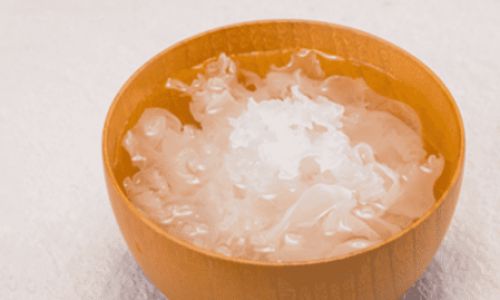
-
Mineral Water: If using bottled water, choose a brand that is low in minerals and has a neutral pH. Spring water and some brands of mineral water can be suitable, but avoid those with high mineral content or strong flavors that may overpower the mushroom.
-
Boiling and Cooling: Boiling tap water can help remove chlorine and other volatile impurities. Allow the water to cool to the desired temperature before using it for soaking Tremella fuciformis.
Practical Tips for Soaking Tremella Fuciformis
Here are some practical tips to ensure successful soaking and optimal preparation of Tremella fuciformis:
-
Preparation: Before soaking, rinse the Tremella fuciformis under cold running water to remove any dirt or debris. Use a soft brush or cloth to gently clean the surface without damaging its structure.
-
Soaking Container: Choose a glass, ceramic, or stainless steel container for soaking. Avoid using plastic, as it may leach chemicals into the water.
-
Water-to-Mushroom Ratio: Use enough water to fully submerge the Tremella fuciformis. A general ratio of 4-6 parts water to 1 part mushroom is recommended.
-
Soaking Time: Adjust the soaking time based on the desired texture and the water temperature used. Cold water soaking may require overnight, while warm water soaking can be done in 30-45 minutes.
-
Storage: After soaking, drain the Tremella fuciformis thoroughly and store it in a clean, airtight container in the refrigerator. It can be kept for up to a week.
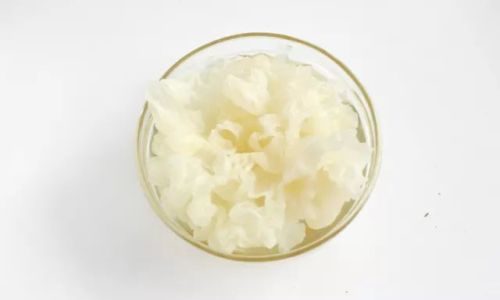
-
Cooking: When ready to cook, Tremella fuciformis can be added directly to soups, stews, or desserts. Its gelatinous texture makes it an excellent thickener and natural emulsifier.
Conclusion
In conclusion, the optimal water for soaking Tremella fuciformis depends on a combination of factors, including purity, mineral content, pH level, and temperature. By carefully selecting and treating the water, you can enhance the texture, flavor, and nutritional profile of this delicate mushroom. Whether you prefer the slow, gentle process of cold water soaking or the quick convenience of warm water soaking, attention to detail will ensure that your Tremella fuciformis dishes are both delicious and nutritious.
Remember, Tremella fuciformis is not just a culinary delight but also a treasure trove of health benefits. By mastering the art of soaking, you can unlock its full potential and incorporate it into a variety of dishes that promote wellness and satisfaction. So, the next time you prepare Tremella fuciformis, take a moment to consider the water you use – it could make all the difference.
This comprehensive guide covers the various aspects of selecting and using the best water for soaking Tremella fuciformis. By understanding the mushroom’s unique properties and the impact of water quality, temperature, and treatment methods, you can ensure optimal results in your culinary preparations. Enjoy experimenting with different soaking techniques and enjoy the health benefits and culinary versatility of Tremella fuciformis!
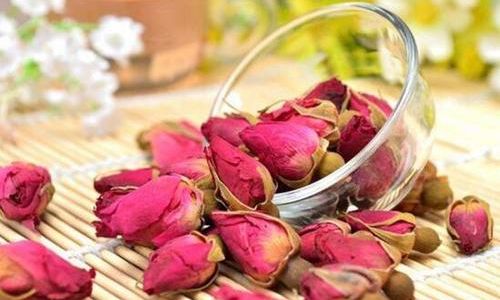
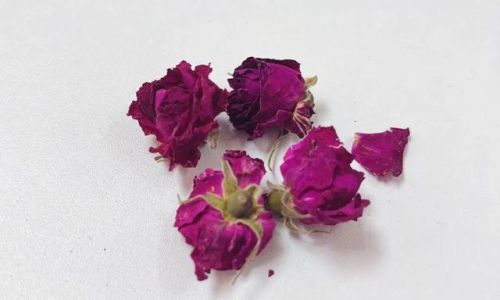
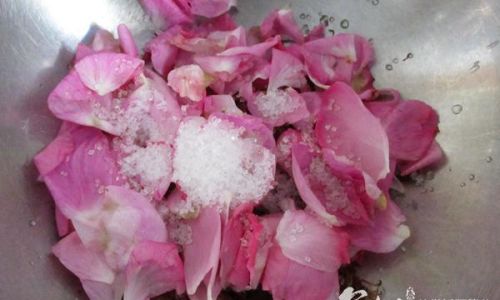


0 comments